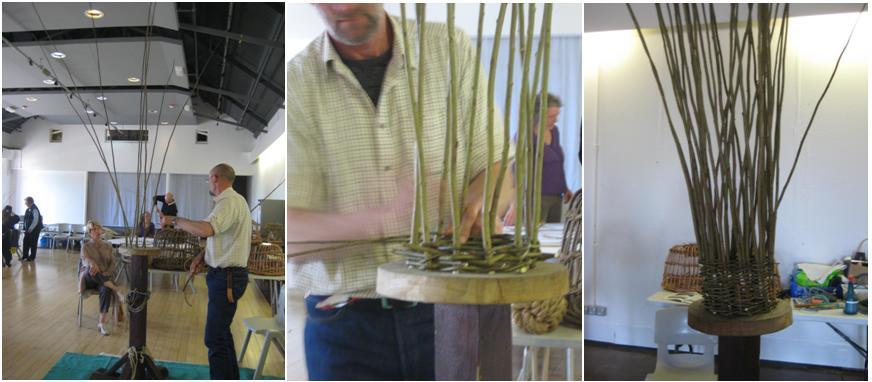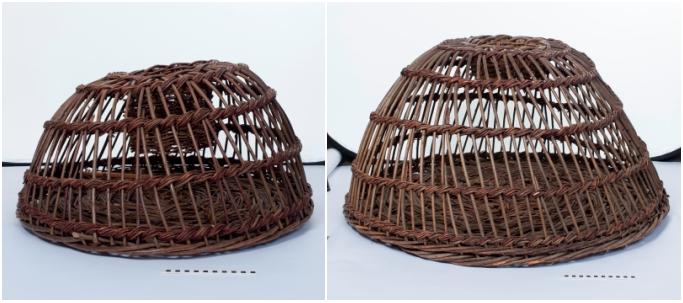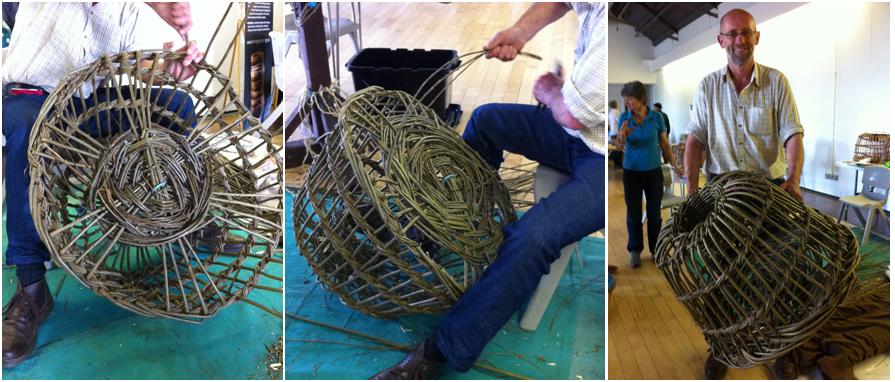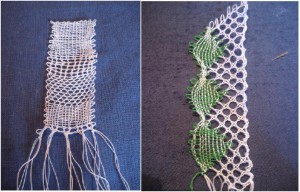Making a withy pot
I promised when I got back from the Basketry & Beyond Festival to write a blog post about ‘lobster pots’, having spent three days next to Dave French, a fifth-generation lobster pot maker, watching him make them. And it wasn’t just Dave – on the third day of the Festival he was joined by two other pot makers, each making pots in a different way. I’d previously ‘met’ Dave via comments he’d posted on this blog about lobster pots, so jumped at the chance to speak to him in person and find out more.
I quickly picked up a few key facts:
- There’s no such thing as a ‘lobster pot’ or a ‘crab pot’ – they’re the same thing, and are called ‘withy pot’.
What you catch with them depends on what type of bait you use – fresh bait for crabs, older bait for lobsters. - There’s a lot of variation in the shapes of the pots, and details in the weave make it possible to tell where, and even by whom, the pots were made.
- Traditionally, Cornish pots have straight sides and are known as ‘inkwell’ pots, while Devon pots have more sloping sides.
- Furthermore, the spiral tends to go anti-clockwise on the Cornish pot, and clockwise on the Devon pot.
- Pots tended to be made in two sizes – a full size pot (approximately 2 feet tall and 26–28 inches in diameter at the base), and a ‘store pot’ of nearly twice the size for storing the catch until it was landed.
- It takes 4–5 hours for one man to make a full size pot, although historically families would work together to make the pots.
- The pots last 1.5–2 years with constant repair.

From left to right. 1: Dave makes his pots standing up, and constructs them on a stand. He begins by inserting withies into the stand. 2: Dave weaves the mouth of the pot. 3: The fully-woven mouth.

From left to right. 4: Dave uses a ‘former’ to bend the withies down to form the curved top of the pot. 5: Dave ties the bent withies to the base of stand. 6: Dave has finished weaving the spiral sides of the pot. As he’s weaving, he inserts extra withies into the sides for support.

From left to right. 7: Dave takes the pot off the stand and turns it upside down to begin work on the base. 8: Dave cuts off any protruding bits of willow. This is particularly important around the mouth, to ensure that the fisherman’s hands weren’t cut when putting bait into the pot, taking the catch out of the pot etc.

From left to right. 9: Dave begins to make the base by bending down opposing sets of withies. 10: Dave bends down more sets of withies and ties them in place. 11: He begins to weave the base.

And finally, the withy pots we have here at MERL. Left: MERL 64/207. A full size pot. Right: 64/206. A store pot. Both were made by A. Hutchings and Sons of Beesands, Devon.
You can view the full records with further photos of our withy pots, as well as the rest of our collections, on our online catalogue.









